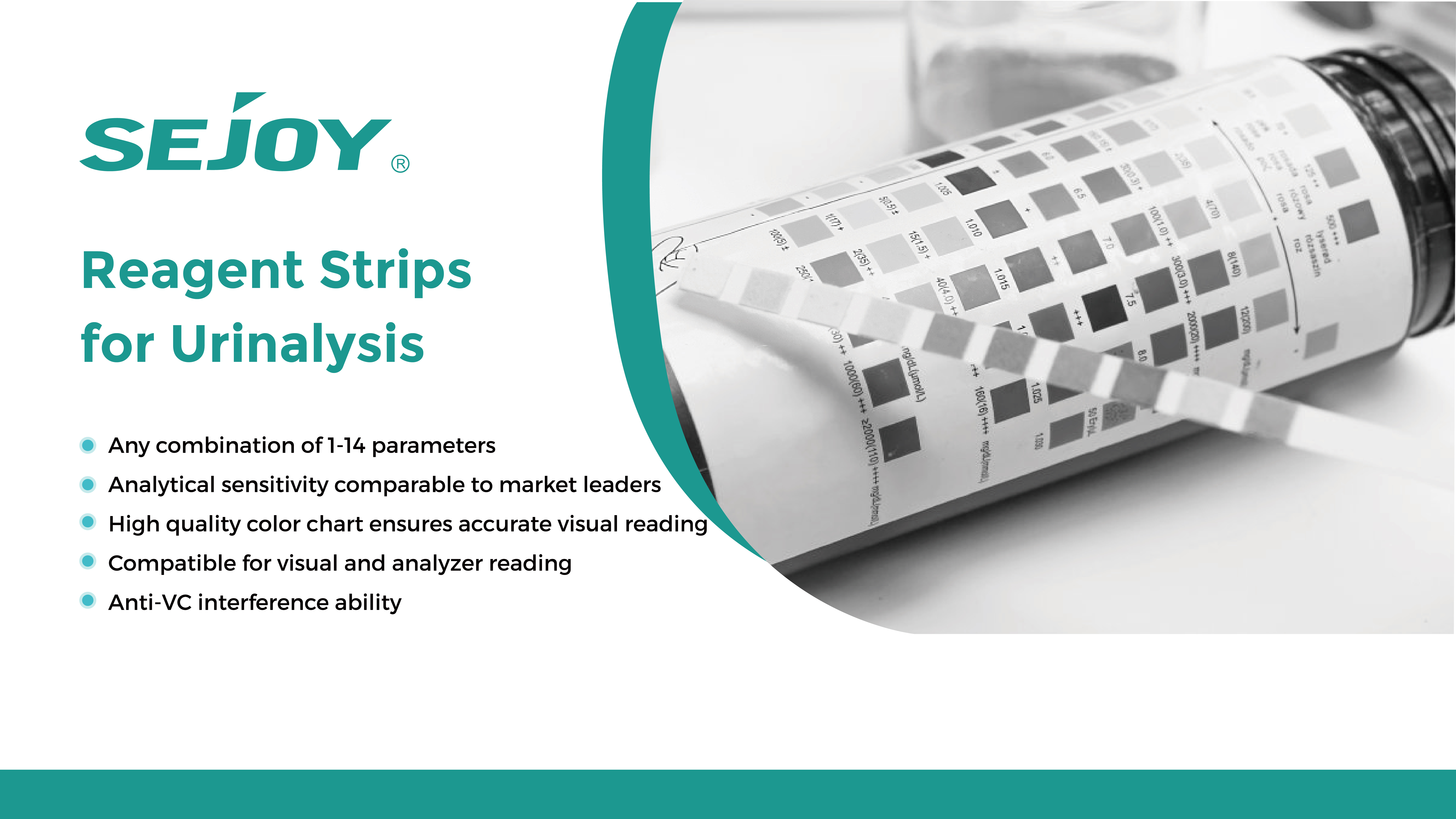Urine analysis test strips, as a commonly used tool in medical testing, play a crucial role in understanding our health status. This test strip provides us with important information about the health status of the kidneys, urinary system, and the whole body by detecting specific chemical components in urine.
The working principle of urine analysis test is based on chemical reactions. When the test strip comes into contact with urine, the chemical reagents on the test strip will react with specific components in the urine, resulting in a color change. By comparing the color changes of the test paper with the standard color chart, we can determine the content of various components in urine, thereby understanding the health status of the body.
Urine analysis test strips can detect various urine components, including:
1. Leukocytes: White blood cells are a type of immune cell in urine, and their presence may indicate urinary tract infections or inflammation.
2. pH: It reflects the acid-base balance of urine and has reference value for judging urinary tract infections, urinary tract stones, etc.
3. Urine specific gravity: it reflects the concentration function of the kidney and is related to diabetes, diabetes insipidus and other diseases.
4. Urinary protein: The protein content in urine may be related to diseases such as kidney disease and hypertension.
5. Urine sugar: the content of glucose in urine, which is helpful to the diagnosis and monitoring of diabetes.
6. Urinary ketone body: It is common in diabetes patients, and can also be seen in hunger, vomiting, etc.
7. Urinary bilirubin and urobilinogen: reflect the status of liver function and biliary system.
8. Nitrite: commonly used for screening urinary tract infections, especially infections caused by Escherichia coli.
9. Ascendic Acid: It is an antioxidant whose content may interfere with the detection results of other urine analysis test strips.
Instructions for using urine analysis test strips
10. Microalbumin: Microalbumin is a type of protein in urine, and its elevation may indicate early kidney damage.
Creatinine: Creatinine is a product of muscle metabolism, and its level can reflect the quality of kidney function.
12. Calcium: The level of calcium in urine may be influenced by various factors, such as diet, medication, and kidney disease.
13. Blood cells: Blood cells in urine may come from damage to the kidneys, urethra, or bladder, or may be a sign of urinary tract infection.
When using urine analysis test kit, please follow the following steps:
1. Collect urine: Use a clean container to collect fresh urine.
2. Take out the test paper: Take out a test paper from the packaging, being careful not to touch the reaction area of the test paper.
3. Immersion in urine: Fully immerse the reaction area of the test strip into the urine.
4. Take out and compare: Take out the test paper, gently shake off excess urine, then compare it with the standard color card and record the results.
5. Precautions: Before use, carefully read the product manual and pay attention to the shelf life and storage conditions. If you have any questions during use, please consult a doctor or pharmacist.
In short, urine analysis test strips are important tools for understanding our health status. By detecting the chemical composition in urine, we can promptly identify potential health issues and take appropriate treatment measures. Therefore, we should pay attention to the test results of urine analysis strips and conduct further examination and treatment under the guidance of doctors.
Post time: Jul-24-2024


